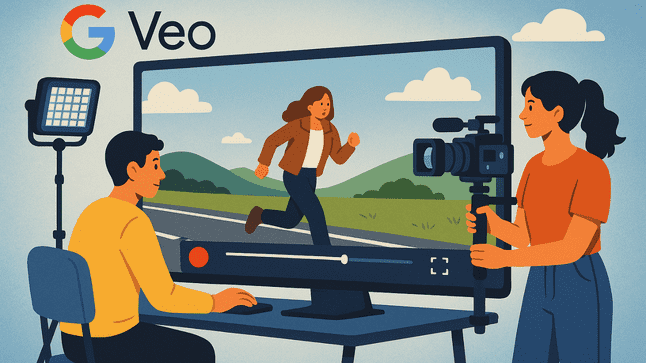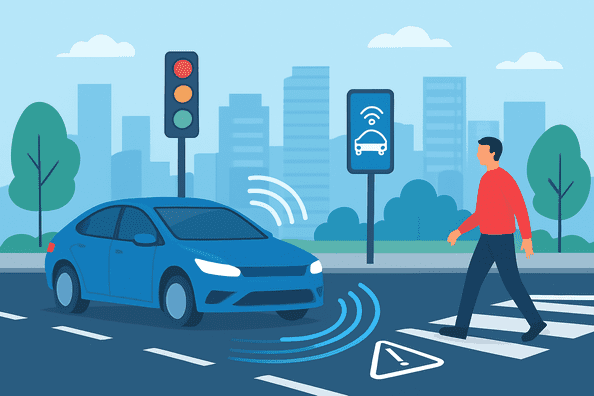The landscape of independent filmmaking has undergone dramatic shifts over the past decade, but nothing quite compares to the revolutionary impact that Google Veo 3 for indie video creators and small production teams is bringing to the table. This cutting-edge AI video generation technology is fundamentally transforming how content creators approach their craft, offering unprecedented access to high-quality video production tools that were once exclusively available to major studios with massive budgets. For independent filmmakers, content creators, and small production teams who have historically struggled with limited resources, expensive equipment, and time constraints, Veo 3 represents a paradigm shift that democratizes the entire creative process.
What makes this technological breakthrough particularly exciting is its timing and accessibility. As the content creation industry continues to explode across platforms like YouTube, TikTok, and streaming services, the demand for high-quality video content has never been higher. Traditional video production methods often require significant investments in equipment, locations, talent, and post-production resources that many independent creators simply cannot afford.
Google’s Veo 3 eliminates many of these barriers by offering AI-powered video generation capabilities that can produce cinema-quality footage from simple text prompts, complete with realistic physics, accurate lip-syncing, and integrated audio generation. This technology isn’t just another tool in the filmmaker’s arsenal; it’s a complete game-changer that’s reshaping the very foundation of how independent content gets created, distributed, and monetized in today’s digital landscape.
What is Google Veo 3 and Why It Matters for Content Creation
Google Veo 3 represents the latest advancement in AI video generation technology, developed by Google DeepMind and announced at Google I/O 2025. This state-of-the-art AI model can generate high-quality short videos from text or image prompts, featuring significant improvements over its predecessor, Veo 2. What sets Veo 3 apart in the competitive landscape of AI video tools is its ability to create realistic footage that follows real-world physics, maintains character consistency, and produces lifelike human features with accurate details like five fingers per hand.
The technology excels at interpreting complex prompts and translating detailed descriptions into visually stunning content that often leaves viewers questioning whether they’re watching AI-generated material or traditional filmed content.
The significance of Veo 3 for content creation extends far beyond its technical capabilities. This AI video generation tool addresses fundamental challenges that have long plagued independent creators and small production teams, including budget constraints, location limitations, talent availability, and time pressures. By offering native audio generation capabilities, advanced camera controls, and seamless integration with Google’s Flow filmmaking platform, Veo 3 provides creators with a comprehensive solution for producing professional-grade content.
The tool’s ability to generate and integrate audio directly into videos, including sound effects, ambient noises, and character dialogue with synchronized lip-syncing, represents a major leap forward in AI-powered content creation technology that eliminates the need for separate audio production workflows.
Breaking Down Cost Barriers: Google Veo 3 for indie video creators and small production teams
The financial landscape of video production has traditionally favored well-funded studios and established production companies, leaving independent creators to work within extremely tight budget constraints. Google Veo 3 for indie video creators and small production teams offers a revolutionary approach to cost-effective video production, though it comes with its own pricing considerations that creators need to carefully evaluate.
The technology is available through Google’s Ultra subscription plan, priced at $249.99 per month, which provides access to 12,000 credits monthly. Each 8-second Veo 3 video consumes 150 credits, allowing subscribers to generate approximately 80 videos per month, which translates to roughly $3.12 per video or $0.39 per second of generated content.
While this pricing structure might initially seem steep for individual creators, it becomes more attractive when compared to traditional video production costs. Independent filmmakers typically spend thousands of dollars on location fees, equipment rentals, talent costs, and post-production services for even short video segments. The ability to generate high-quality footage without these traditional expenses can result in significant cost savings, particularly for creators who produce content regularly.
Additionally, the subscription model allows small production teams to share access and maximize their credit usage across multiple projects. For content creators who monetize their work through platforms, sponsorships, or client projects, the cost per video can be easily justified by the time savings and production value improvements that Veo 3 provides.
Revolutionary Features That Level the Playing Field
Google Veo 3 introduces a comprehensive suite of features designed specifically to address the pain points that independent creators face in their daily production workflows. The native audio generation capability stands as perhaps the most significant advancement, allowing creators to produce complete audiovisual content without requiring separate recording sessions, voice talent, or audio post-production work.
This feature alone can save independent filmmakers hundreds or thousands of dollars per project while dramatically reducing production timelines. The AI’s ability to generate synchronized dialogue, ambient sounds, and sound effects creates opportunities for storytelling that were previously inaccessible to budget-conscious creators.
Advanced camera controls represent another game-changing feature set that puts professional cinematography techniques within reach of any creator with a creative vision. Users can specify complex camera movements including pans, zooms, dolly shots, and angle changes that would typically require expensive equipment and skilled operators.
The system’s understanding of cinematic language allows creators to craft dynamic, visually engaging content that rivals professionally shot footage. Additionally, features like object manipulation, style control through reference images, and the ability to generate seamless transitions between specific frames provide unprecedented creative flexibility for independent productions.
| Feature | Traditional Production Cost | Veo 3 Capability | Cost Savings |
| Professional Voice Acting | $200-$500 per session | Native AI audio generation | 95-100% |
| Camera Equipment Rental | $300-$800 per day | AI camera controls | 100% |
| Location Fees | $500-$2000 per day | AI environment generation | 90-100% |
| Post-Production Audio | $50-$150 per hour | Integrated audio sync | 80-90% |
| Video Editing | $75-$200 per hour | AI scene generation | 60-80% |
From Script to Screen: How Veo 3 Streamlines the Creative Process
The traditional filmmaking pipeline involves numerous time-consuming steps that can extend production timelines for months, particularly for independent creators who often handle multiple roles themselves. Veo 3 revolutionizes this process by enabling creators to move directly from conceptualization to finished footage with minimal intermediate steps.
Writers and directors can now input detailed scene descriptions and receive high-quality video content that matches their creative vision, eliminating the need for extensive pre-production planning, location scouting, casting, and filming logistics. This streamlined approach allows creative professionals to focus on storytelling and artistic direction rather than getting bogged down in technical production challenges.
The integration with Google’s Flow platform further enhances the creative workflow by providing an intuitive interface for crafting cinematic videos through detailed descriptions of locations, camera movements, and stylistic preferences. This collaborative approach between human creativity and AI capability enables rapid prototyping and iteration, allowing filmmakers to experiment with different visual approaches before committing to final versions.
Independent creators can now produce multiple variations of scenes, test different narrative approaches, and refine their content with unprecedented speed and flexibility. The ability to generate content in real-time also opens up new possibilities for responsive content creation, where creators can quickly adapt their material based on audience feedback or trending topics.
Audio Integration: A Game-Changer for Independent Productions
One of the most significant barriers facing independent video creators has been the complexity and cost associated with professional audio production. Traditional video projects require separate recording equipment, sound technicians, voice talent, and extensive post-production audio work to achieve professional results.
Veo 3’s native audio generation capability eliminates these requirements by creating and integrating audio directly into generated videos, including realistic dialogue, environmental sounds, and sound effects that are perfectly synchronized with the visual content. This breakthrough feature enables solo creators and small teams to produce content with production values that rival much larger productions.
The quality and realism of Veo 3’s audio generation extend beyond basicsound effects to include complex dialogue sequences with accurate lip-syncing, which has historically been one of the most challenging aspects of video production to master. Independent filmmakers can now create character-driven narratives without hiring voice actors or investing in expensive recording equipment and studio time.
The AI’s understanding of context allows it to generate appropriate ambient sounds, background music, and sound effects that enhance the storytelling impact of each scene. This comprehensive audio integration not only saves significant production costs but also dramatically reduces the technical expertise required to create professional-quality content.
Key audio capabilities that benefit independent creators include:
- Synchronized dialogue generation with realistic lip movements and emotional expression
- Environmental sound design that matches visual elements and location contexts
- Background music creation that complements scene mood and pacing
- Sound effects generation for actions, impacts, and atmospheric elements
- Multi-character conversations with distinct voice characteristics and natural interaction patterns
Quality vs. Cost: Is Veo 3 Worth the Investment for Small Creators?
The decision to invest in Google Veo 3 requires careful consideration of both the immediate costs and long-term value proposition for independent creators. At $249.99 per month, the Ultra subscription represents a significant monthly expense that must be weighed against potential revenue generation and cost savings compared to traditional production methods.
However, when broken down on a per-project basis, the economics become more favorable for creators who produce content regularly. The ability to generate 80 high-quality videos per month means that creators producing weekly content can access the tool for approximately $12.50 per video, which is substantially less than the cost of traditional video production for most independent projects.
The quality output from Veo 3 often surpasses what independent creators can achieve with traditional methods within similar budget constraints. Users report that the generated content frequently appears indistinguishable from professionally filmed material, with realistic physics, proper lighting, and natural human movements that eliminate many telltale signs of synthetic content.
For creators whose revenue depends on audience engagement and content quality, the improved production values can lead to increased viewership, better monetization opportunities, and enhanced credibility with potential sponsors or clients. Additionally, the time savings associated with AI video generation allows creators to focus on content strategy, audience development, and revenue optimization rather than getting caught up in technical production challenges.
Real-World Applications and Success Stories
Early adopters of Google Veo 3 technology are already demonstrating its practical applications across various content creation scenarios. Google’s collaboration with Ghetto Film School and Gilga studio, led by Donald Glover, showcases how the technology can be integrated into professional filmmaking workflows for pre-visualization, concept development, and rapid prototyping.
These partnerships provide valuable insights into how independent creators can leverage similar approaches to enhance their own production capabilities. The technology has proven particularly valuable for creating establishing shots, background scenes, and visual effects sequences that would typically require significant budget allocation for location fees and equipment rentals.
Content creators across different niches are finding innovative ways to incorporate Veo 3 into their workflows. Travel vloggers can generate stunning establishing shots of locations they couldn’t physically access, while educational content creators can produce custom animated sequences that illustrate complex concepts without requiring animation expertise.
Marketing professionals and small agencies are using the technology to create engaging video advertisements and social media content at scale, reducing client costs while maintaining high production standards. The filmmaking community has been particularly excited about the tool’s ability to generate consistent character appearances across multiple scenes, enabling creators to develop ongoing series and narratives without the logistical challenges of managing talent schedules and continuity requirements.
Examples of successful Veo 3 implementations include:
- Independent documentarians creating historical reenactments and conceptual visualizations
- Small marketing agencies producing client testimonials and product demonstrations
- Educational content creators developing animated explanations and visual metaphors
- Music video producers creating artistic visuals and narrative sequences
- Social media influencers enhancing their content with cinematic establishing shots and transitions
Comparing Veo 3 to Other AI Video Tools for Budget-Conscious Creators
The AI video generation market includes several competing platforms, each offering different pricing structures and capability sets that appeal to various creator segments. OpenAI’s Sora, which gained significant attention when released more widely in December 2024, focuses primarily on video generation without the native audio capabilities that distinguish Veo 3.
Runway ML’s Gen-3 Alpha offers competitive video generation features at approximately $0.05 per second, making it roughly eight times less expensive than Veo 3’s pricing structure. However, these cost comparisons must be evaluated alongside feature differences, quality outputs, and integration capabilities that may justify the premium pricing for certain use cases.
For budget-conscious creators, the decision between platforms often comes down to specific project requirements and production volumes. Creators who prioritize audio integration and don’t mind paying premium prices for cutting-edge quality may find Veo 3’s comprehensive feature set worth the investment.
Those working with tighter budgets or producing large volumes of content might benefit from more affordable alternatives, even if they require additional post-production work for audio integration. The key consideration is total production cost, including time investment and additional tools required to achieve desired quality levels. Independent creators should also consider the learning curve associated with each platform and the availability of community support and educational resources.
The competitive landscape continues evolving rapidly, with new entrants and feature updates appearing regularly. Some creators adopt a multi-platform approach, using different tools for different types of content based on specific project requirements and budget constraints. This strategy allows maximum flexibility while optimizing costs across various production scenarios. Additionally, many platforms offer trial periods or tiered pricing that enables creators to test capabilities before committing to long-term subscriptions.
The Future of Independent Filmmaking with AI Technology
The integration of AI video generation technology like Veo 3 into independent filmmaking workflows represents just the beginning of a broader transformation that will reshape the entire creative industry. As these technologies continue improving and becoming more accessible, we can expect to see new forms of visual storytelling emerge that were previously impossible or impractical for independent creators to attempt.
The democratization of high-quality video production will likely lead to an explosion of diverse voices and perspectives in filmmaking, as creators who were previously limited by technical or financial barriers gain access to professional-grade production tools.
Future developments in AI filmmaking technology will likely focus on even greater integration between different production elements, improved character consistency across longer narratives, and enhanced creative control over stylistic elements. We may see the emergence of AI directors that can interpret high-level creative instructions and manage complex multi-scene productions autonomously.
The technology will also likely become more collaborative, allowing multiple creators to work together on projects by sharing AI-generated assets and building upon each other’s contributions. As the technology matures, we can expect costs to decrease while capabilities expand, making advanced video production accessible to an even broader range of creators.
The implications extend beyond individual creators to include changes in distribution models, audience expectations, and industry economics. As AI-generated content becomes more prevalent, audiences may develop new appreciation criteria that value creativity and storytelling over traditional production values.
This shift could favor independent creators who excel at narrative innovation and authentic voice over studios that rely primarily on expensive production spectacle. The technology may also enable new interactive and personalized content formats that allow viewers to influence storylines or request customized versions of existing content.
Getting Started: Tips and Best Practices for Small Production Teams
Successfully implementing Google Veo 3 into independent production workflows requires strategic planning and understanding of the platform’s strengths and limitations. New users should begin by experimenting with simple projects that allow them to familiarize themselves with the AI’s interpretation of different prompt styles and technical capabilities.
Starting with shorter scenes and single-character scenarios helps creators understand how to craft effective descriptions that produce desired results. It’s important to treat the initial learning period as an investment in developing a new creative skill set rather than expecting immediate professional-quality outputs.
Effective prompt engineering becomes crucial for maximizing the value of AI video generation tools. Successful creators develop systematic approaches to describing scenes, including specific details about lighting, camera angles, character actions, and environmental elements. Building a library of successful prompts and techniques allows teams to work more efficiently and consistently across projects.
Collaboration within small production teams can be enhanced by establishing clear workflows for reviewing generated content, providing feedback, and iterating on creative ideas. Teams should also develop backup plans for scenarios where AI-generated content doesn’t meet project requirements, ensuring they can maintain production schedules regardless of technical challenges.
Essential best practices for small production teams include:
- Developing detailed prompt templates for consistent results across different scene types
- Creating content calendars that maximize monthly credit allocation and subscription value
- Establishing quality control processes for reviewing and approving AI-generated content
- Building hybrid workflows that combine AI generation with traditional production methods when appropriate
- Investing in prompt engineering skills through experimentation and community learning resources
- Planning projects around AI capabilities rather than trying to force traditional approaches
- Developing client communication strategies for projects that incorporate AI-generated elements
- Creating backup content strategies for situations where AI output doesn’t meet expectations
The key to success lies in viewing AI video generation as a powerful creative partner rather than a complete replacement for human creativity and judgment. The most successful independent creators using these tools focus on storytelling, artistic vision, and audience connection while leveraging AI capabilities to overcome traditional production limitations and resource constraints.



